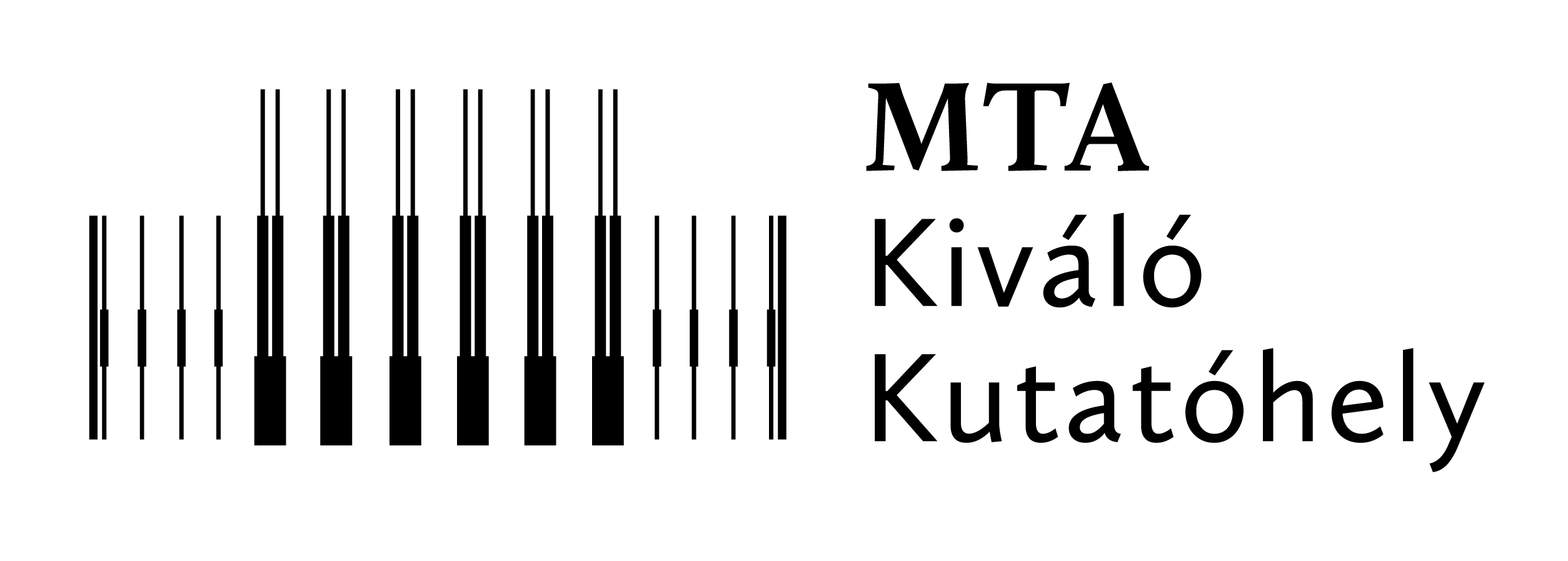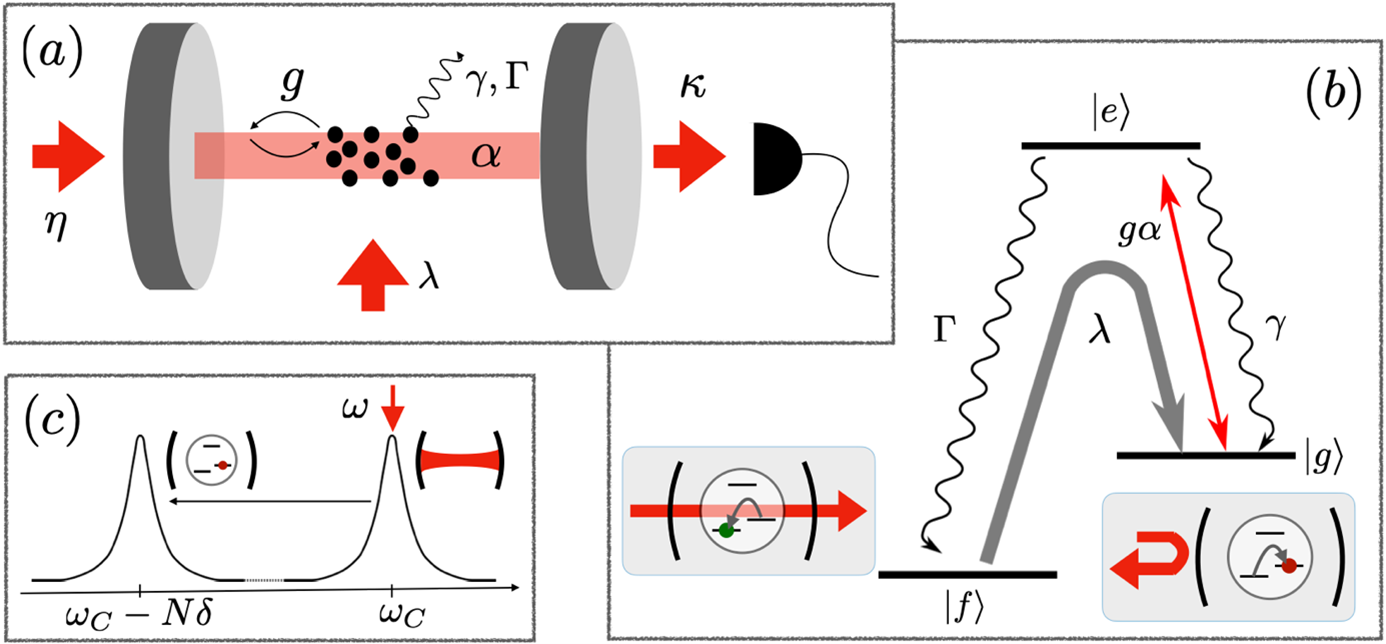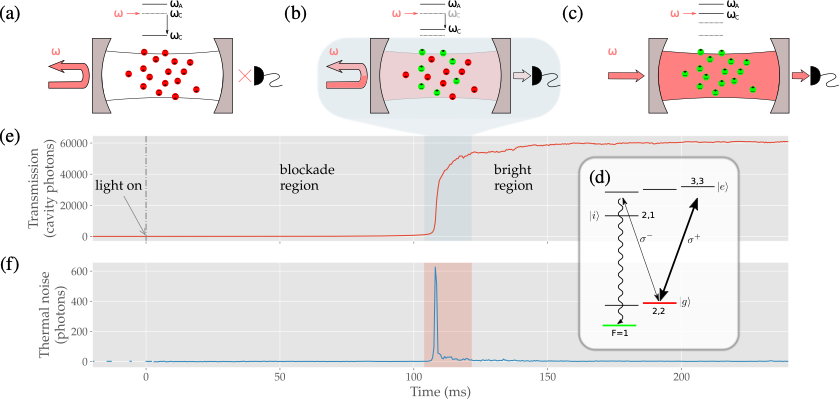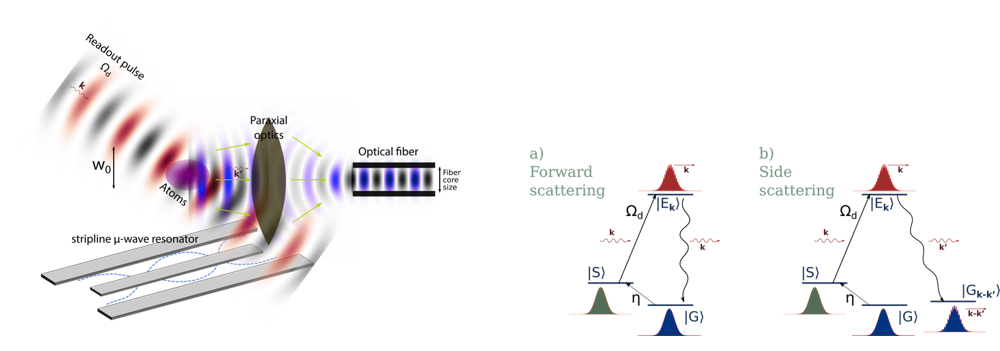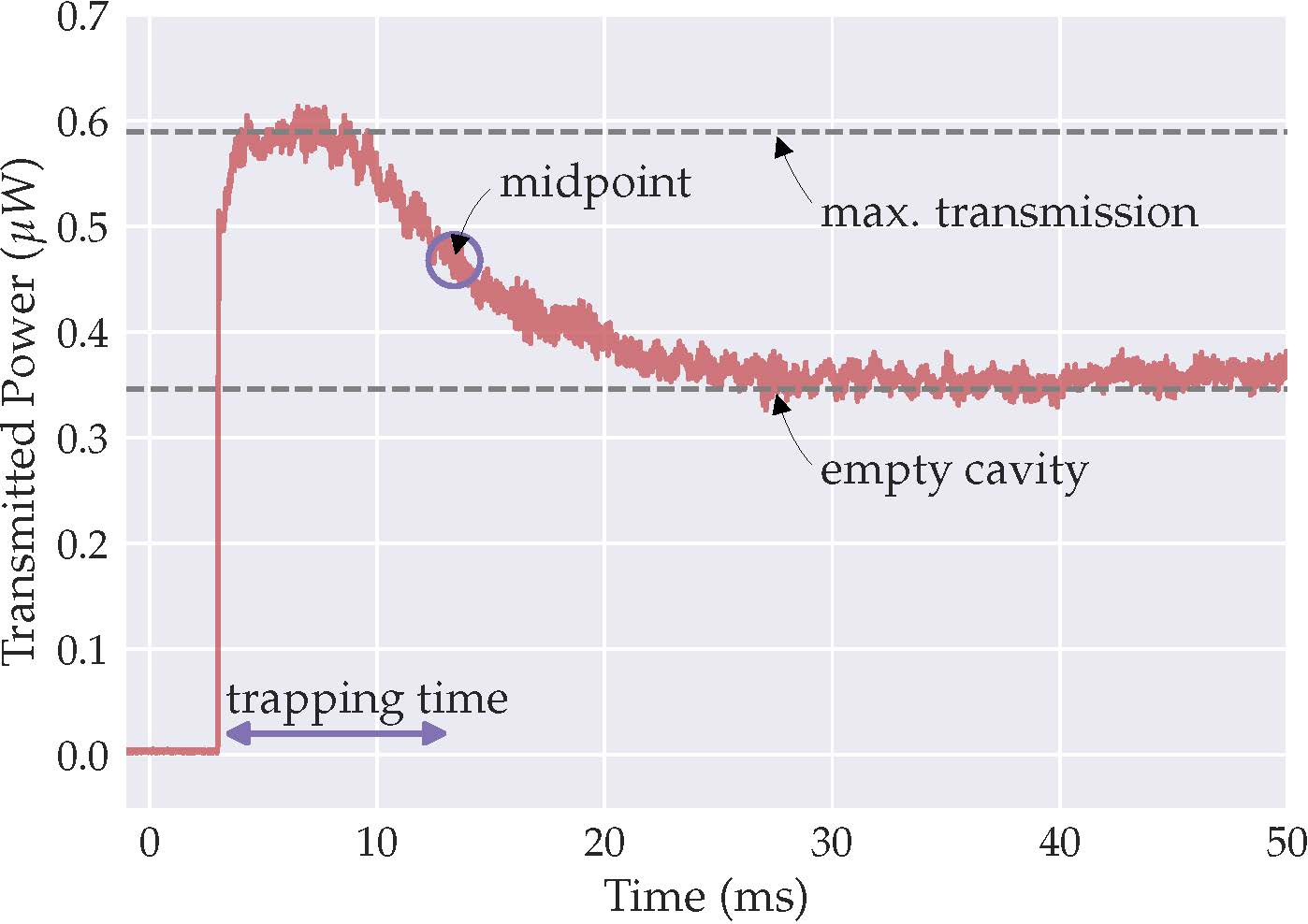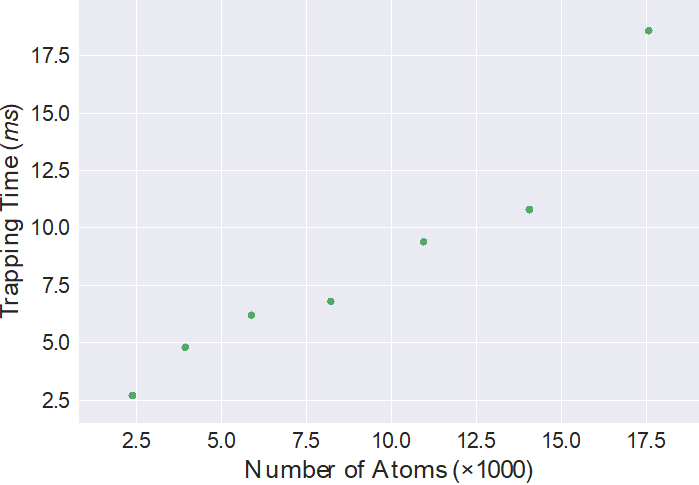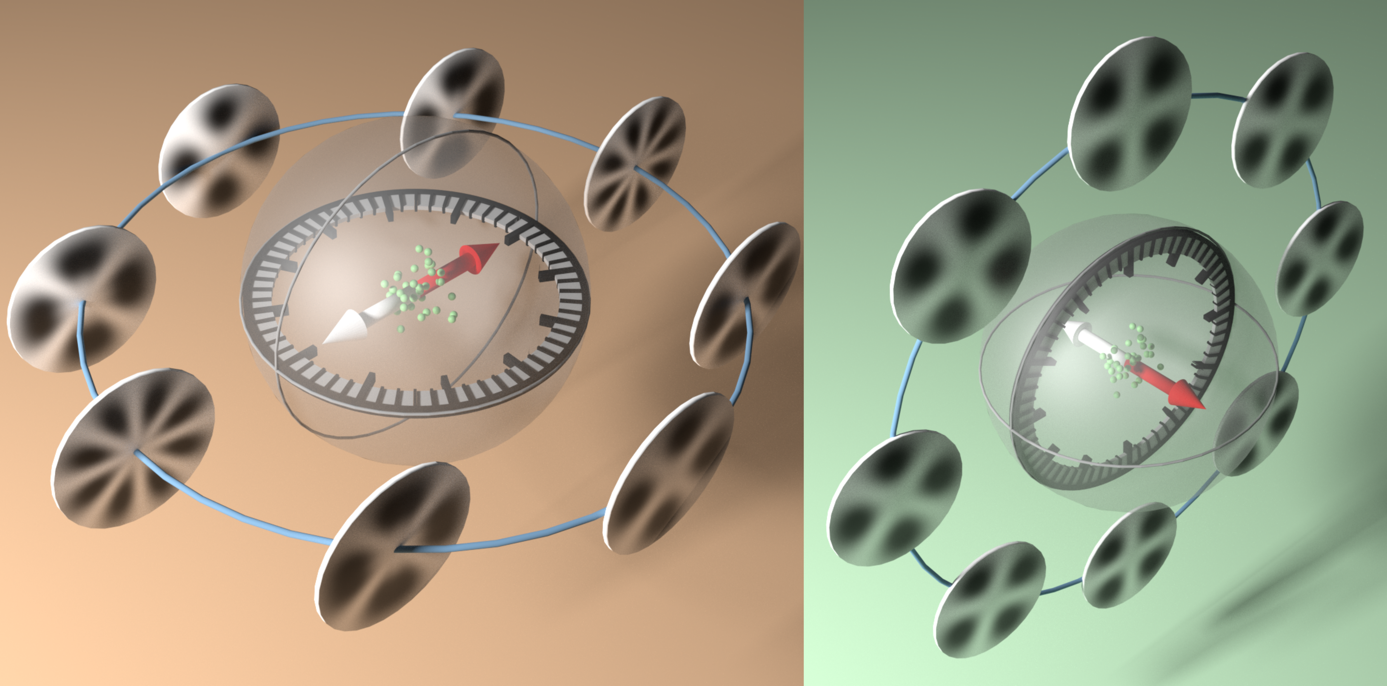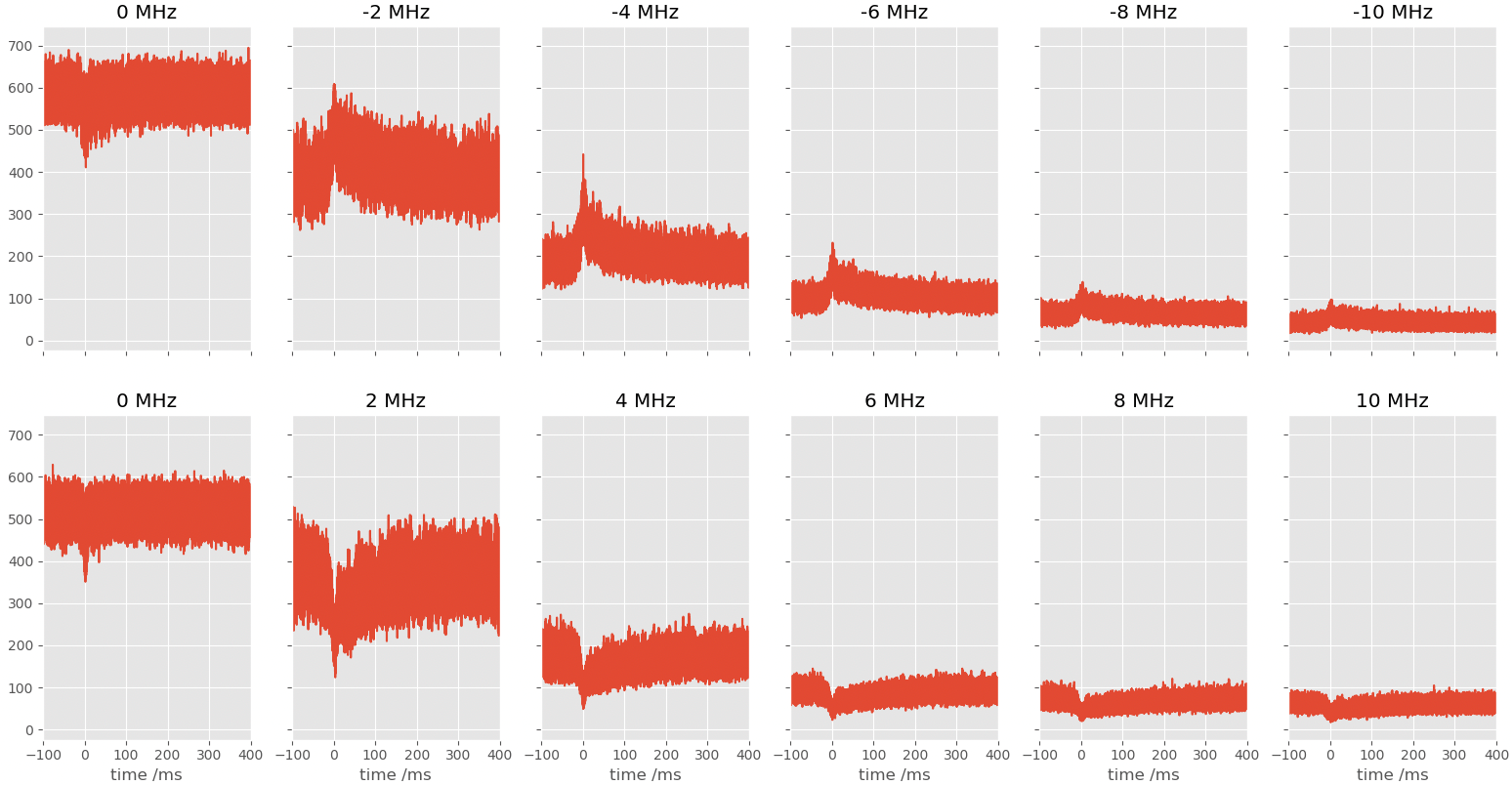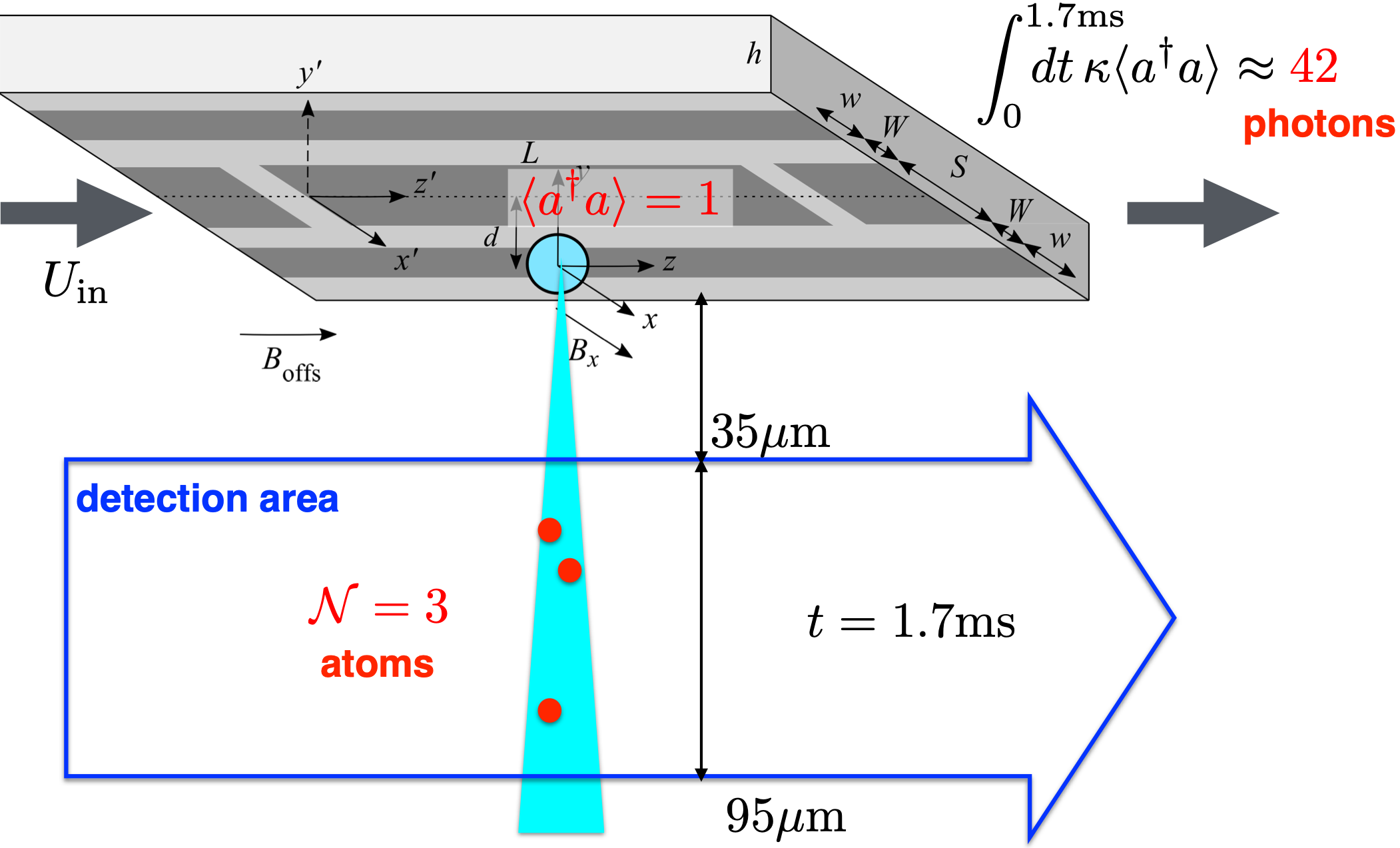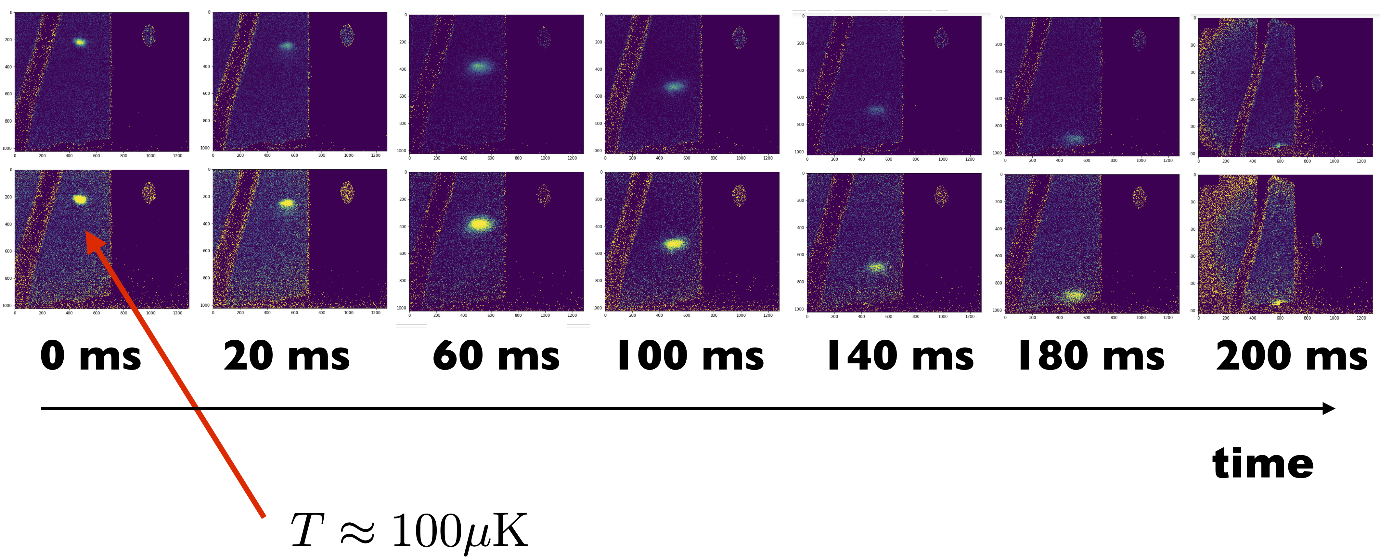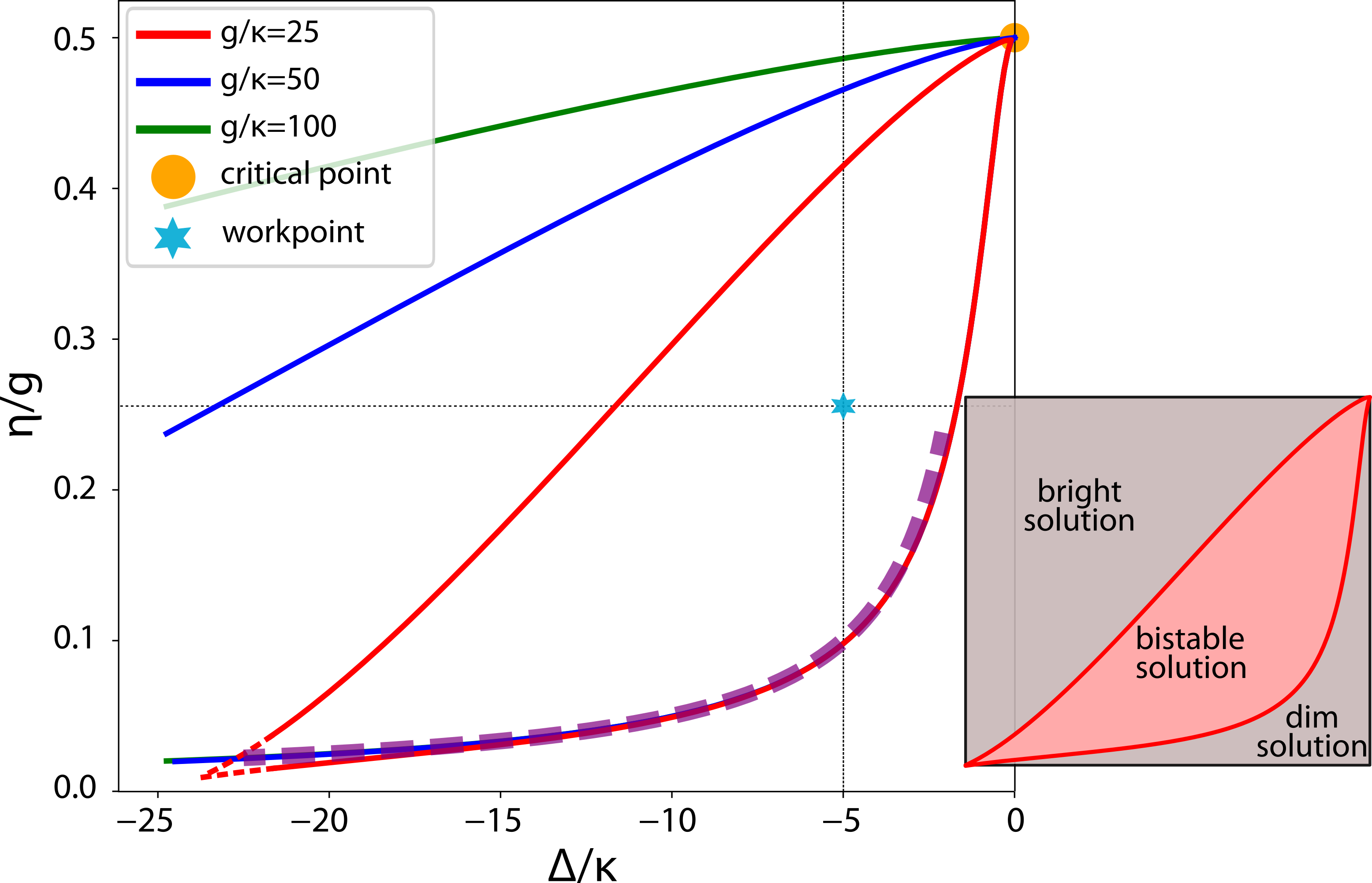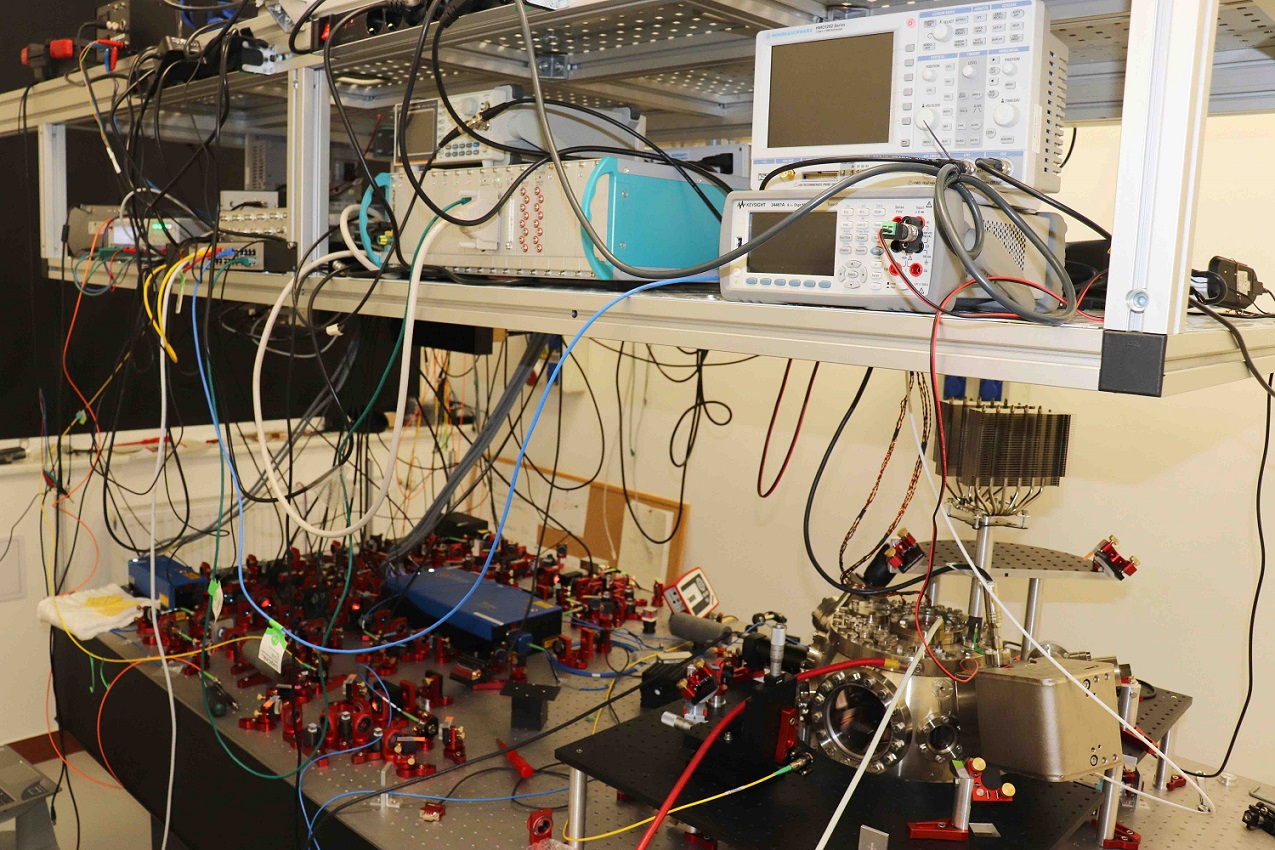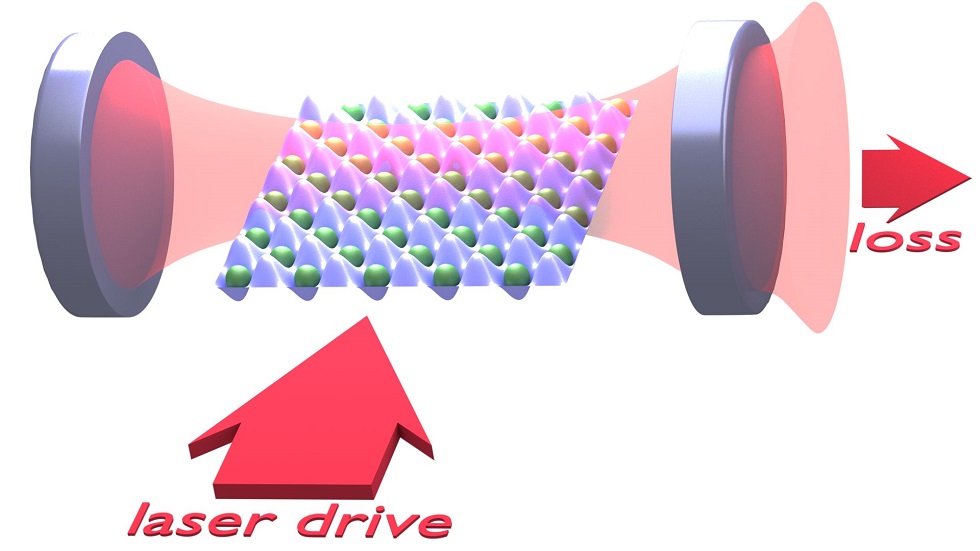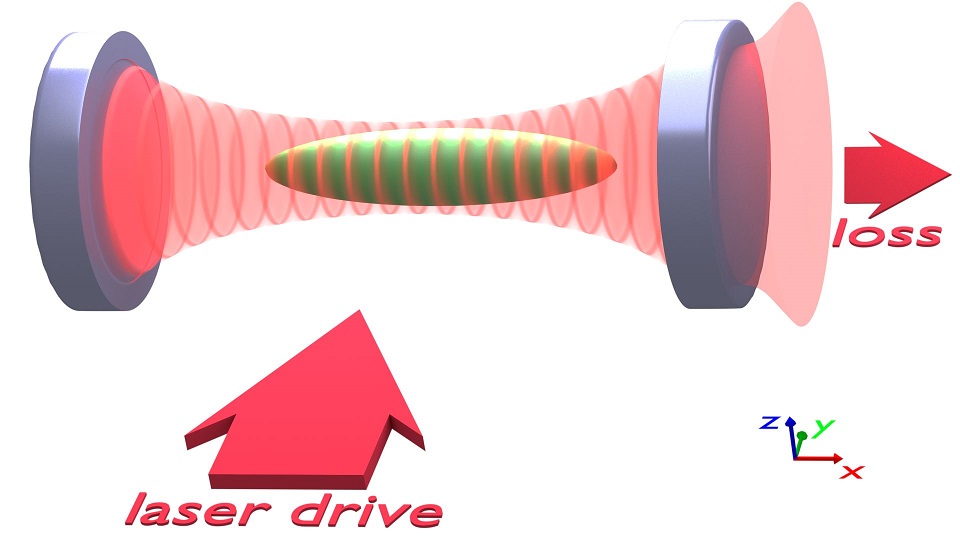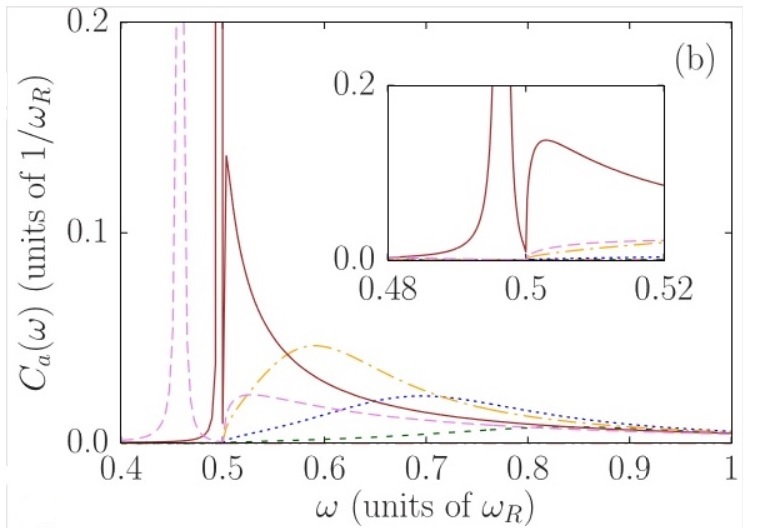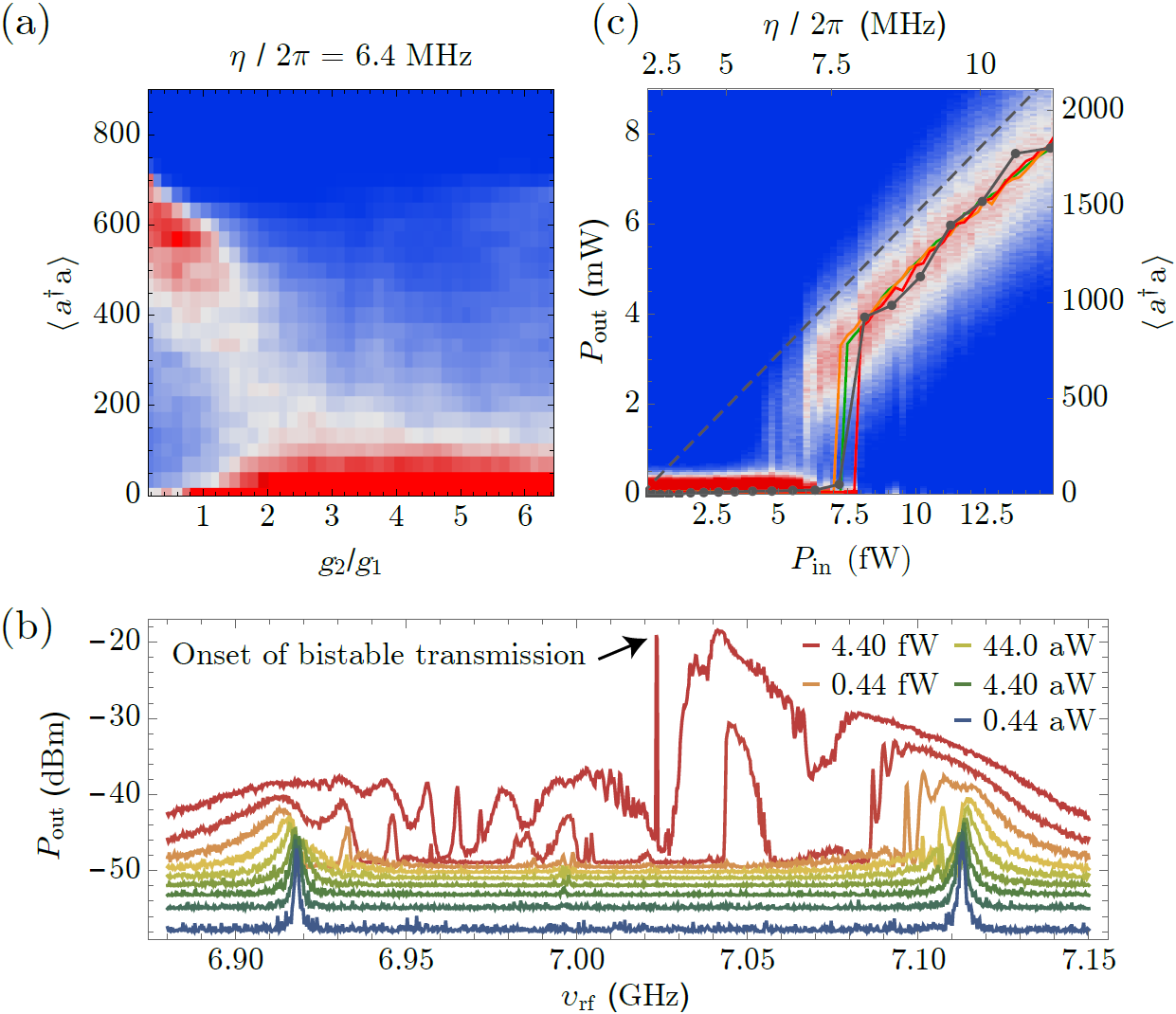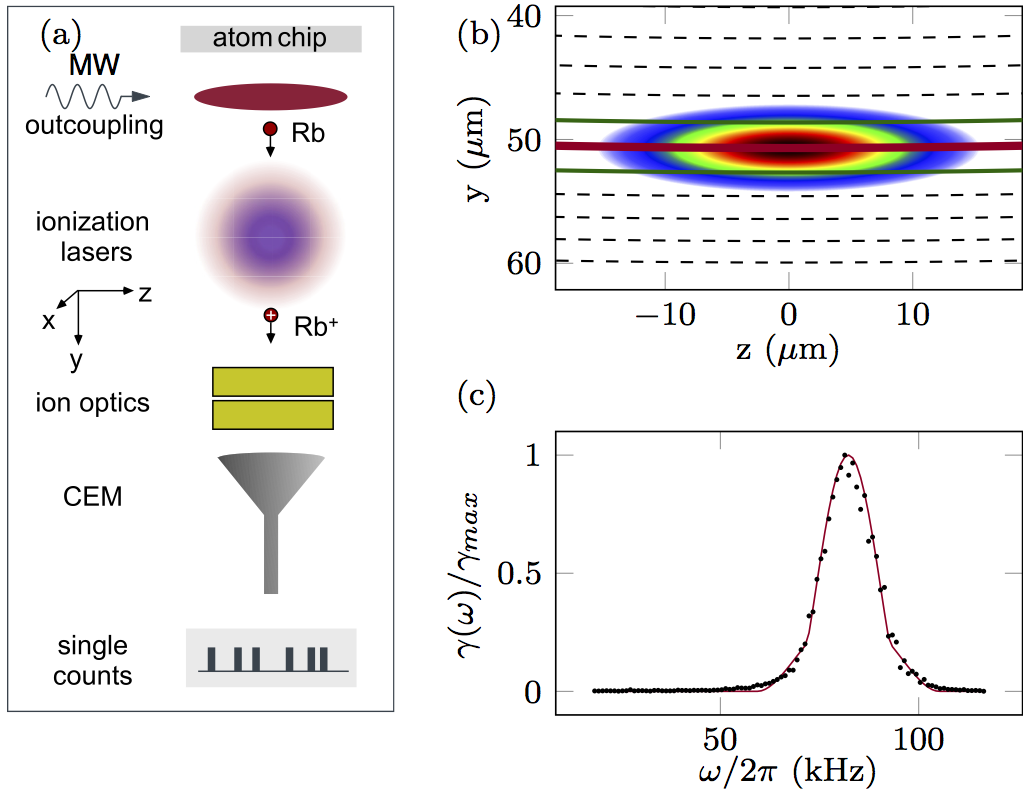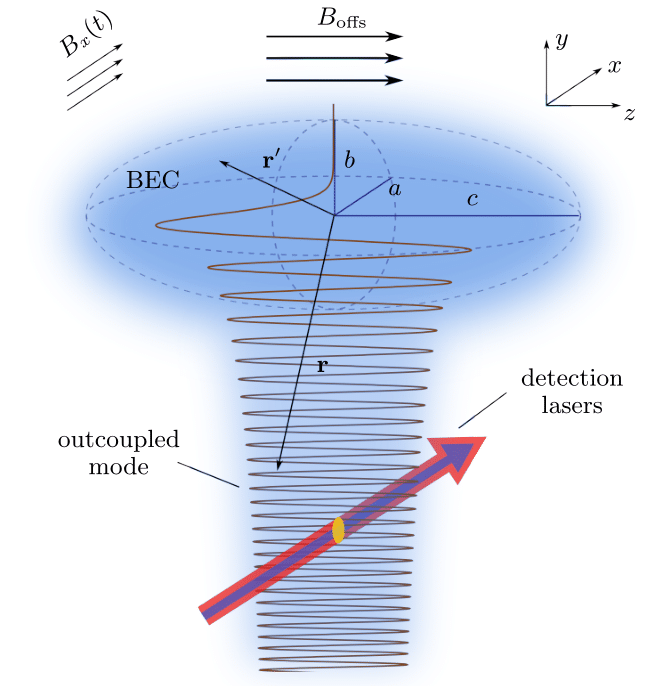2024
Peter Domokos, Thomas W Clark, András Dombi, Balázs Endrész, Bence Gábor, Árpád Kurkó, Dávid Nagy, Bálint Sárközi, Alexandra Simon, Dániel Varga, András Vukics, Francis I B Williams
Experiment on Cavity Quantum Electrodynamics with cold Rb atoms. — We showed that an optimized loading of a cold ensemble of rubidium-87 atoms from a magnetic trap into an optical lattice sustained by a single, far-red-detuned mode of a high-Q optical cavity can be efficient despite the large volume mismatch of the traps. The magnetically trapped atoms are magnetically transported to the vicinity of the cavity mode and released from the magnetic trap in a controlled way meanwhile undergoing an evaporation period. Large number of atoms get trapped in the dipole potential of the cavity mode for several hundreds of milliseconds. We monitor the number of atoms in the mode volume by a second tone of the cavity close to the atomic resonance. While this probe tone can pump atoms to another hyperfine ground state uncoupled to the probe, we demonstrate state-independent trapping by applying a repumper laser.
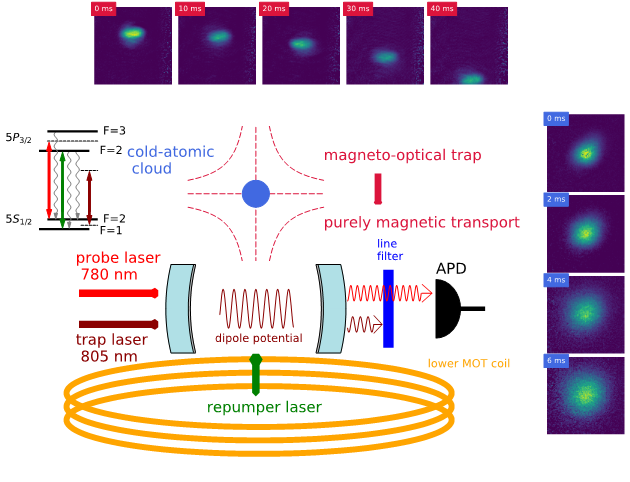
Fig. 1. Schematic of the experimental apparatus. A cold ensemble of 87Rb is created by magneto-optical trapping and polarization-gradient cooling. After optical pumping into trapped states in a magnetic quadrupole configuration, the cloud is magnetically transported downwards into the optical cavity (illustrated by the horizontal sequence of absorption images). The cavity has two modes relevant to the experiment: (1) the optical lattice mode far-red-detuned (≈805nm, dark red arrow) from the atomic resonance (2) a mode close to the atomic resonance (red arrow) used for monitoring the intra-cavity atom number via the dispersive effect of the atoms. On the cavity output, the trap light is filtered out, while the intensity of the probe light is monitored by an avalanche photodetector. To recover the atoms depumped into the 𝐹 =1 hyperfine ground state uncoupled to the probe, we can optionally apply a repumper tone (green arrow). The relevant atomic levels and the laser tones are depicted in the top left corner of the figure, using the same colourcode for the latter as described above. The vertical sequence of absorption images shows the expansion of the atomic cloud (time of flight) upon switching off the magnetic trap.
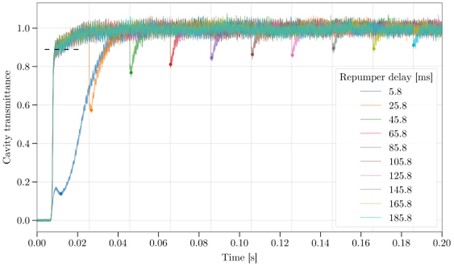
Figure 2. Stroboscopic estimate of the atom number. Each curve is an average of 10 runs and corresponds to a different delay of the repumper exposure. The probe light is opened at 7 ms in every run. The abrupt rise from 0 to 0.9 (black dashed line) in the beginning of all the curves but the blue one corresponds to the timescale of the shutter opening, and to the depumping process to the F=1 state. The transmittance does not reach its maximum because of the atoms falling into the interaction volume from the cloud surrounding the mode. When the repumper is turned on, the transmittance drops suddenly, due to the dispersive shift of the atoms which recover from F=1 to F=2. The averages around the minima at these dips (denoted by coloured dots) are used to determine the effective number of atoms. Concerning the blue curve, the initial fast rise remains below 0.2, because in this case the repumper is already on when the probe light enters the cavity, and hence the depumping is disabled. The small dip afterwards can be explained with the trapping effect of the probe light itself. All of the curves, including the blue one, once they reach their minimum, tend to T=1, as the cavity field and the repumper together heat the atoms out of the trap. The noise visible on the curves is dominated by Poissonian shot noise.
Reference
D Varga, B Gábor, B Sárközi, KV Adwaith, D Nagy, A Dombi, TW Clark, FIB Williams, A Vukics, P Domokos, Loading atoms from a large magnetic trap to a small intra-cavity optical lattice,
Physics Letters A 505 (2024) 129444
The photon-blockade breakdown phenomenology We continued to explore the photon blockade breakdown in a continuously driven cavity QED system, a prime example of a first-order driven-dissipative quantum phase transition, in a collaboration with the Quantum Integrated Devices Laboratory at the Institute for Science and Technology, Austria. By coupling a single transmon qubit to a superconducting cavity with an in situ tunable bandwidth, we observed the system transitioning from microscopic behavior dominated by quantum fluctuations to increasingly macroscopic behavior, characterized by stable phases and long timescale switching between coherent and vacuum states. Our findings, supported by neoclassical theory and quantum-jump Monte Carlo simulations, revealed the potential of such systems for quantum sensing and metrology. We introduced a superquantization rule that identifies robust stationary states in driven-dissipative systems, confirming its accuracy through numerical simulations and demonstrating the resilience of multistability in a cavity-qudit system to single-emitter decay. Additionally, we examined the photon-blockade breakdown bistability through a comparative analysis of fully quantum, semiclassical, and neoclassical models. We demonstrated the robustness of the neoclassical description, rooted in the high quantum purity of the bright state, which distinguishes this phenomenon from conventional optical bistability.
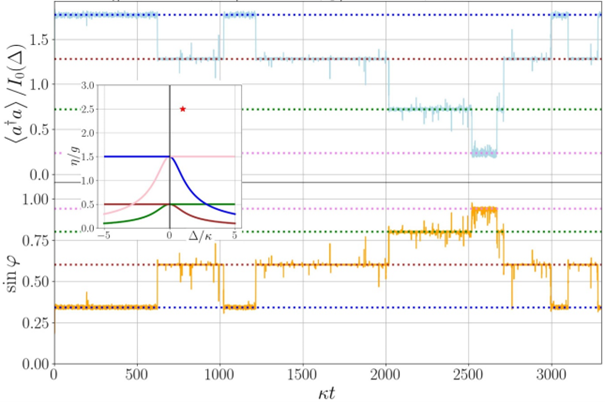
Figure 3. Quantum trajectory simulations of cavity output exhibiting multistability.
References
Sett, Riya, Farid Hassani, Duc Phan, Shabir Barzanjeh, Andras Vukics, and Johannes M. Fink. "Emergent macroscopic bistability induced by a single superconducting qubit." PRX Quantum 5, no. 1 (2024): 010327.
Német, Nikolett, Árpád Kurkó, András Vukics, and Péter Domokos. "Superquantization rule for multistability in driven-dissipative quantum systems." New Journal of Physics 26 (2024): 093009.
Kurkó, Árpád, Nikolett Német, and András Vukics. "How is photon-blockade breakdown different from optical bistability? A neoclassical story." JOSA B 41, no. 8 (2024): C29-C37.

